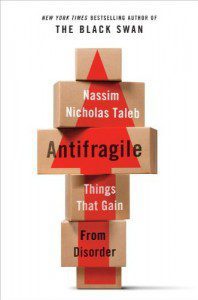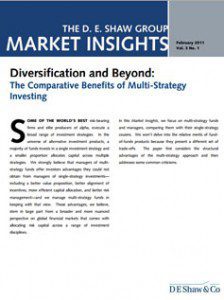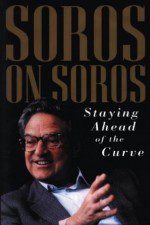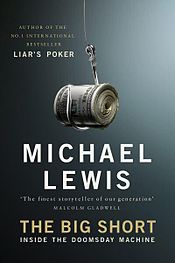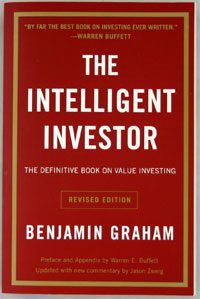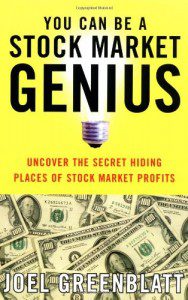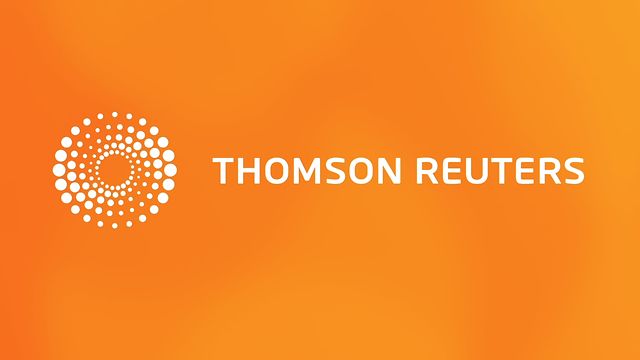Today, we look at seven more books and e-books that we consider to be essential reading for anybody that is looking to invest in – or play a part in a managing – a hedge fund, including another offering from Black Swan author Nassim Taleb, a straight-from-the-horse’s-mouth account of George Soros’ trading philosophies, and a book that manages to transcend a dreadful name to be one of the best books on the topic of the markets that has ever been written.
Antifragile: Things That Gain from Disorder
Nassim Nicholas Taleb (Penguin)
With his groundbreaking book The Black Swan, author Nassim Taleb demonstrated that unpredictable and highly improbable events underpin almost everything that happens in the world. Here, he urges us to look at uncertainty in a more positive light, deeming it a desirable – even necessary – factor in a number of important equations. In response to this new-found truth, Taleb presents the ideal of the “antifragile” – beyond the concepts of robustness and resilience.
While resilient or robust things resist shocks and stay the same, the antifragile just keeps improving. He draws an analogy with human bones, which get stronger when subjected to tension or stress, and other things in life that can benefit from volatility, turmoil, stress, and disorder. Furthermore, it is immune to errors in prediction and has additional protection from adverse events.
For example, how did the sinking of the Titanic save lives, and why do city-states perform better than nation-states? With this book, Taleb provides us with a blueprint for surviving in a world where uncertainty is the only certainty.
The 5 Percent Solution
Clifford Asness and Antti Ilmanen (Institutional Investor)
This extended article, originally published in Institutional Investor and now available to view for free online, has gone on to become a foundation text for many within the investment industry. It gives one of the most concise and convincing arguments for the use of techniques such as leverage and derivatives trading to boost annual returns above the psychologically-important 5% mark.
Diversification has long been a watchword of the investment industry, but the concepts associated with it are changing all the time. In an earlier age, diversification might have meant owning stock in more than one sector, or investing in both stocks and debt securities. These days, it is all about investing in sometimes complex financial instruments alongside more traditional investments in order to give stronger – and crucially, more reliable – returns.
Diversification and Beyond: The Comparative Benefits of Multi-Strategy Investing by DE Shaw & Co
Back in the early days of hedge funds, there was only one strategy that counted – the long/short ‘hedging’ model that gave a name to this new investment class. However, over time hedge fund managers have begun to see the benefits in employing other strategies alongside this, or even instead of this, in order to bring greater returns and market neutrality, which was ultimately the goal of the original hedge fund strategy.
This study by the D.E. Shaw Group aims to show how a multi-strategy approach can reap greater rewards, and bring more stability, than a dedicated single-strategy approach. While there is something to be said for sticking to what you are good at, many of these specialist approaches are highly dependent on market conditions for their success. And that, as this study makes clear, is why it can pay to diversify with regards to investment strategies.
George Soros (Wiley)
As hedge fund managers go, they don’t get much more famous than George Soros, AKA The Man Who Broke The Bank of England. His record-breaking success with the Quantum Fund brought him some profile in the 1980s, but it wasn’t until he made over $1 bilion by shorting the pound – and forcing the UK to exit the European Exchange Rate Mechanism in the process – that he became a household name.
There have been many books about George Soros, and he has written a lot of them himself. However, unless you have a keen analytical mind (and a stomach for what most would deem to be overly-dense prose) then you’re better off sticking with the third-party accounts of his life and work. However, this book, which overcomes Soros’ weighty writing style by engaging him instead in two lengthy interviews, manages to bridge the gap between readability and from-the-horses-mouth detail. As an introduction to the investment methods of one of the greatest market thinkers of all time, this book is unparalleled.
The Big Short: Inside the Doomsday Machine
Michael Lewis (W.W. Norton & Co)
If you wanted to profit from the financial crisis, then the best thing you could have done is to bet against – or ‘short’ – the collateralized debt obligation bubble that brought the global financial system to its knees. This book tells the stories of those who did, highlighting the eccentric nature of these contrarian investors who believed the bubble was going to burst.
Those interviewed for the book include Meredith Whitney, who predicted the demise of Citigroup and Bear Stearns; Steve Eisman, an outspoken hedge fund manager; Greg Lippmann, a Deutsche Bank trader; Dr. Michael Burry, an ex-neurologist who created Scion Capital despite suffering from blindness in one eye and Asperger’s syndrome; Eugene Xu, a quantitative analyst who created the first CDO market by matching buyers and sellers; and the founders of Cornwall Capital, who started a hedge fund in their garage with $110,000 and built it into $120 million when the market crashed..
As well as highlighting those who benefited from the crash, it shines a spotlight on some of those who suffered the most, such as Merrill’s $300 million CDO manager Wing Chau, Howie Hubler, who lost $9 billion in one trade – the biggest ever – and AIG, which suffered over $99 billion in losses. This acclaimed book was shortlisted for the 2010 Financial Times Business Book of the Year Award, and spent 28 weeks on the New York Times non-fiction bestseller list.
The Intelligent Investor
Benjamin Graham (Harper Business Essentials)
Many of the books we have covered in this series were written after the financial crisis, but market principles go much deeper than the latest event-inspired revisions. In fact, some of the best books about investing were written decades ago, and in most cases history has been kinder to them than you might expect.
The Intelligent Investor is one such book, and has been considered essential reading for market investors for over 35 years now, with Warren Buffett describing it as the most important book he has ever read. It’s basically the foundation text for the principle of “value investing”, a strategy of buying into fundamentally good businesses at times when their stock is underpriced. Although prescriptive, this philosophy is in fact applicable to a wide variety of investment strategies, and the success of investors such as Warren Buffett are a testimony to the soundness of these principles.
You Can Be a Stock Market Genius
Joel Greenblatt (Prentice Hall)
Sometimes, great books have terrible-sounding titles, and this book is an exemplary case. While the approach of mixing humour with finance can often backfire, in the masterful hands of Joel Greenblatt, it only serves to illustrate his insights with greater clarity. As a fund manager who had achieved 50% compound annual growth for ten years at the time of publication, his arguments have added conviction.
It lays out a series of investment principles, such as the need to concentrate on looking for bargains, limiting downside risk, and loading up on your best ideas. The author has a particular preference for special and distressed situations which have a high uncertainty but a low risk, and looking in places where other investors are not. For those that have an interest in the distressed investment strategy, this is a highly informative – and readable – book that maps out the key advantages of this approach.
I am a writer based in London, specialising in finance, trading, investment, and forex. Aside from the articles and content I write for IntelligentHQ, I also write for euroinvestor.com, and I have also written educational trading and investment guides for various websites including tradingquarter.com. Before specialising in finance, I worked as a writer for various digital marketing firms, specialising in online SEO-friendly content. I grew up in Aberdeen, Scotland, and I have an MA in English Literature from the University of Glasgow and I am a lead musician in a band. You can find me on twitter @pmilne100.






























